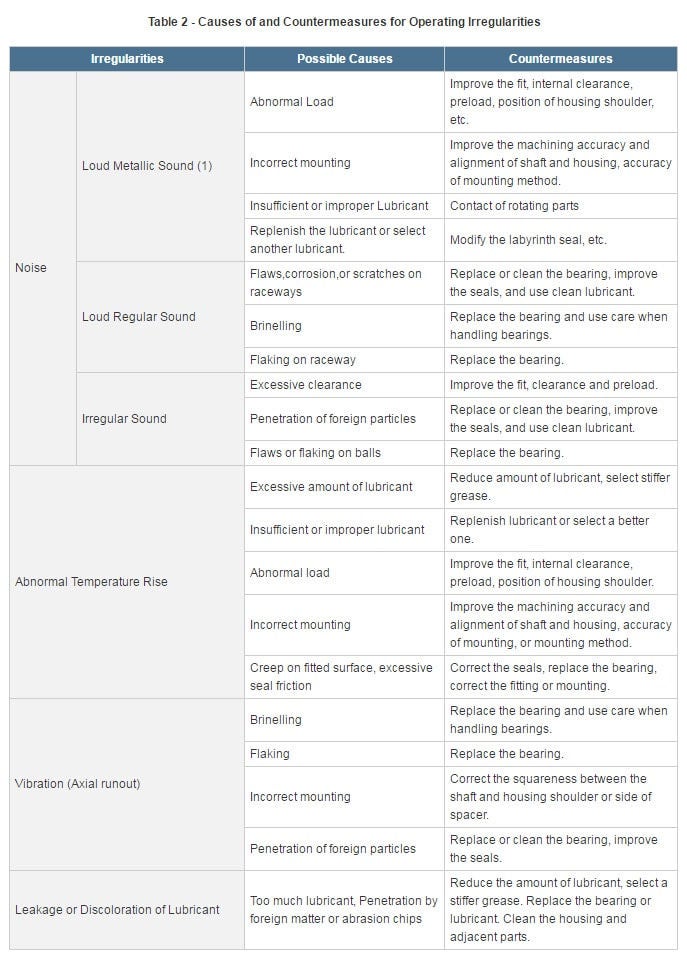Operation Inspection/Running Tests
After mounting has been completed, a running test should be conducted to determine if the bearing has been mounted correctly. Small machines may be manually operated to ensure that they rotate smoothly. Check for sticking due to foreign matter or visible flaws; uneven torque caused by improper mounting or an improper mounting surface; and excessive torque caused by inadequate clearance, mounting error, or seal friction. If there are no abnormalities, powered operation may be started.
After a pre-operation examination, large machines that cannot be turned by hand should be started with no load. After the machine starts, immediately cut off the power and allow the machine to coast to a stop. Confirm that there are no abnormalities such as vibration, noise, contact with the rotating parts, or similar. Powered operation should be started slowly without load and observed carefully until it is determined that no abnormalities exist. Then, gradually increase the speed, load, and other conditions to their normal levels. Be sure to monitor for abnormal noise, excessive rise of bearing temperature, leakage and contamination of lubricants, etc. If any abnormality is found, stop the test immediately and inspect the machine. If possible, the bearing should be dismounted for examination.
Although bearing temperature can generally be estimated by the temperature of the outside surface of the housing, it is better to directly measure the temperature of the outer ring through oil holes. The bearing temperature should rise gradually to a steady state within one to two hours after operation starts. If the wrong bearing or mounting is used, bearing temperature may increase rapidly and become abnormally high. The cause of this abnormal temperature may be excessive lubricant, insufficient bearing clearance, incorrect mounting, or excessive friction of the seals. In high-speed operation, an incorrect selection of bearing type or lubricating method may also cause abnormal temperature rise. The sound of a bearing may be checked with a noise locater or vibration monitoring equipment. Abnormal conditions may be indicated by a loud metallic sound or other irregular noise. Possible causes include incorrect lubrication, poor alignment of the shaft and housing, or the entry of foreign matter into the bearing. Details and countermeasures for various irregularities are listed in Table 2.

Note
(1) Intermittent squealing or high-pitched noise may be heard in medium- to large-sized cylindrical roller bearings or ball bearings operating under grease lubrication in low-temperature environments. Under such low-temperature conditions, bearing temperature will not rise, and fatigue life and grease performance are not affected.
Although intermittent squealing or high-pitched noises may occur under these conditions, the bearing is fully functional and can continue to be used. If greater noise reduction or quieter operation properties are needed, please contact your nearest NSK branch office.
